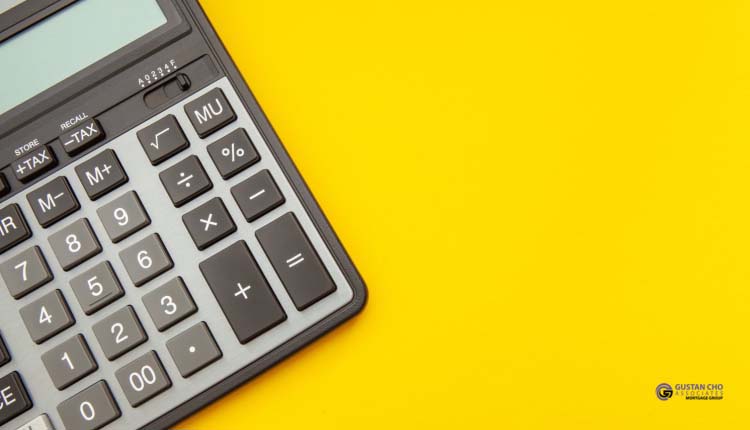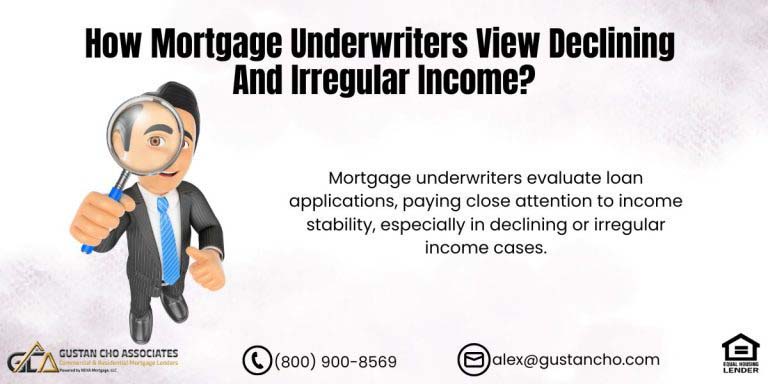In this blog, we will discuss payment shock from paying rent as a renter to paying a mortgage as a homeowner.
Payment shock is the increase of the new housing payment by homeowners versus the rent they used to pay as renters. Low Payment shock is a compensating factor. The lender wants to know that the new homeowner does not have a large increase on a new mortgage versus what they used to pay as a renter.
If a renter is living rent-free with family and suddenly has a new housing payment of $3,000 per month, this is a large payment shock. However, if a renter pays $2,800 per month and the new housing payment is $2,900, this is a low payment shock. This article will discuss the importance of payment shock for homeowners.
How Much Can I Afford Versus Qualify
When contemplating the purchase of a home, prospective buyers must evaluate more than just their mortgage loan eligibility. Another important factor to consider is the current rental payment. Comparing this rental expense with the projected housing payment for the new property is essential. It’s vital to recognize that homeownership introduces additional costs that renters may not have encountered.
For First-Time Home Buyers, the key consideration is whether they can comfortably manage the new housing payment compared to their previous rental payment. The disparity between their current rental expenses and the proposed housing payment is commonly called “payment shock.”
How Underwriters View Payment Shock
Mortgage underwriters find comfort in borrowers experiencing minimal payment shock. Sometimes, payment shock isn’t an issue unless borrowers rely on it as a compensating factor. From an underwriter’s perspective, an individual accustomed to paying $2,000 monthly rent should seamlessly transition to a new mortgage payment of $2,000 as a homeowner.
Moving from a $2,000 monthly rent to a new housing payment of $2,000 constitutes zero payment shock. Any payment shock below 5% is deemed a compensating factor.
Worried About Payment Shock? We’ve Got You Covered
Jumping from rent to a mortgage can feel overwhelming, but with the right plan, it doesn’t have to be.
Importance of Payment Shock on Manual Underwriting on VA and FHA Loans
Verification of rent is necessary for manual underwriting. The validity of rent verification is contingent on the borrower’s ability to furnish 12 months’ worth of canceled checks to their landlord, demonstrating timely payments over the past year. Alternatively, renters can submit 12 months of bank statements as an alternative to the canceled checks.
Can Lenders Waive Rental Verification on Manual Underwriting?
Gustan Cho Associates is willing to forgo the verification of rent in cases where the borrower resides without paying rent with family members. This accommodation is made to assist individuals in saving funds for the down payment and closing costs associated with purchasing a home.
The lender will furnish a “Living with the Family Rent-Free” letter, which must be filled out and signed by both the family member and the borrower. It’s important to note that the FHA and VA loan programs are the two loan options that permit manual underwriting.
Importance Of Payment Shock In Manual Underwriting
Payment Shock is carefully considered during the manual underwriting process. All manual underwriting files necessitate the Verification of Rent (VOR). To be valid, Verification Of Rent requires borrowers to submit rental checks for the previous 12 months and/or bank statements. All rental payments for the past 12 months must be made on time.
For tenants leasing from a property management company, the property manager can fill out, sign, and date a VOR Form provided by lenders in place of 12 months’ canceled checks and/or bank statements.
Underwriters will assess what the borrower paid as a renter and compare it to the new housing payment. The disparity between the two is referred to as payment shock.
Current Rental Payment Versus Future Mortgage Payment Analysis By Underwriters
Mortgage lenders will assess the borrower’s existing housing payment as a crucial factor. Mortgage underwriters aim to understand the anticipated new mortgage payment. They will scrutinize whether the prospective homebuyer can manage the new housing payment by contrasting it with their previous rental expenses.
The evaluation of the new housing payment will encompass principal, interest, taxes, and insurance and will be compared with the borrower’s former rental payment. Additionally, if the new homebuyer has homeowners association dues, these will be incorporated into the proposed housing payment.
Paying Rent Versus Proposed New Mortgage Payment
Prospective homeowners should exercise caution against acquiring an excessive number of houses. It’s essential to remember that certain debts might not be reflected in the credit report and may not be considered by lenders. The crucial inquiry for new homeowners is determining how much home they can afford. It’s important to avoid purchasing a property that would necessitate allocating all of one’s earnings to the mortgage payment.
Concerns By Lenders Of The Increase Of Housing Payments With New Home Purchases
Payment shock, a term commonly used in the mortgage industry, refers to the disparity between a borrower’s new proposed housing payment and their previous rental payment. This change typically occurs with adjustable-rate mortgage loans after the initial fixed-rate period.
For example, if an individual transitions from renting an apartment to purchasing a larger home, the monthly housing payments may experience a significant and sudden increase, leading to what is termed as payment shock.
This phenomenon is particularly relevant for homebuyers who previously enjoyed rent-free living with their families, as they will now see an adjustment in their monthly budget, reflecting the new responsibility of making a housing payment after living without such expenses.
How Do Mortgage Lenders Calculate Payment Shock?
Payment shock refers to the disparity between the amount a tenant was previously paying in rent and the prospective mortgage payment for a new home buyer. There is no payment shock when the renter’s current rent is $1,000, and the proposed housing payment matches that figure.
However, if the renter’s rent is $1,000 and the new mortgage payment is $2,000, the payment shock is 50%. Payment shock is a factor primarily relevant to marginal borrowers undergoing manual underwriting.
FHA and VA loans are the only two mortgage programs permitting manual underwriting. Borrowers with credit scores exceeding 620 and who receive automated underwriting system approval typically do not encounter concerns related to payment shock.
Payment Shock? Let’s Minimize the Impact
Lenders look at your rent history and income. We’ll help you build a strong case and get approved smoothly.
How Is Payment Shock Calculated And Analyzed By Mortgage Underwriters
Mortgage Underwriters calculate payment shock by dividing the new proposed housing payment by the old monthly housing payment. Here is a case scenario:
- A new payment for a new home buyer is $1,700 per month
- The old rent payment was $1,100 per month
- Lenders will calculate by dividing the old payment of $1,100 by the new principal, interest, taxes, and insurance housing payment of $1,700
- Yields payment shock of 65%
Any payment shock of 5% or less is viewed as a compensating factor.
Payment Shock And Mortgage Qualification
Borrowers who receive approval/eligibility through an automated underwriting system (AUS) can rest assured that the comparison between their new housing payment and previous rental payments is correct.
Nevertheless, if the AUS stipulates rental verification as a condition, borrowers must furnish the required information. Payment shock refers to the disparity between the rent previously paid by borrowers and the proposed new PITI (principal, interest, taxes, insurance). In manual underwrites, a low housing payment is considered a compensating factor.
Low Payment Shock Is Considered Compensating Factors By Mortgage Underwriters
Lenders closely consider any rise in housing payments, particularly when dealing with borrowers with marginal credit and higher debt-to-income ratios. Typically, lenders prefer the new housing payment to remain below 5%. Lenders seek compensating factors to mitigate the risk if the housing payment exceeds this threshold.
What Are Compensating Factors
Compensating factors are positive factors, and examples are the following:
- reserves
- savings
- investment accounts
- income that is not used to qualify for an income
- IRA accounts
- 401k account
- other assets
The purpose of assets being viewed as compensating factors is that in the event of borrowers going through tough financial times, they have assets they can rely on to make their monthly mortgage payments.
Payment Shock Is Not Just For Mortgage Lenders
Prospective homeowners informed of their eligibility for a specific mortgage loan should pause and carefully consider whether they can comfortably manage the proposed new mortgage payment.
Merely receiving approval from a mortgage lender and being provided with a specific monthly breakdown of principal, interest, taxes, and insurance (PITI) payments does not guarantee that the resulting monthly housing payment aligns with the borrower’s financial comfort. It is essential to remember that homeowners incur additional expenses compared to renters.
Debts Exempt From Payment Shock Calculations
Utility payments will be much higher when renting an apartment than when owning a single-family home. Mortgage underwriters do not count utility payments. Certain utilities, such as water bills and scavenger services, are included in the monthly rent for renters.
Homeowners need to pay for water bills and scavenger services. Homeowners need always to have reserves. If appliances break down or the furnace or air conditioning unit malfunctions, these repairs are high-ticket. Some repairs can cost hundreds of dollars, if not thousands.
For more information about the content of this article or other mortgage-related topics, please get in touch with Gustan Cho Associates at 800-900-8569 or text us for a faster response. Or email us at alex@gustancho.com. The Gustan Cho Associates Mortgage Group team is available 7 days a week, evenings, weekends, and holidays.
Don’t Let a Higher Payment Derail Your Homeownership Goals
We specialize in helping renters transition to mortgage payments—even with high DTI or payment shock concerns.
FAQ About Payment Shock From Paying Rent To New Mortgage Payments
What is payment shock? Payment shock refers to the increase in housing payment when transitioning from renting to owning a home. It’s the disparity between the new mortgage payment and the previous rental payment.
How is payment shock calculated? Payment shock is calculated by dividing the new proposed housing payment by the old monthly housing payment. For example, if the new payment is $1,700 per month and the old rent payment was $1,100 per month, the payment shock would be 65%.
Why is payment shock important for homeowners? Lenders consider payment shock to assess whether borrowers can comfortably manage their new housing payment compared to their previous rental payment. It’s crucial for mortgage qualification, especially in manual underwriting processes.
What constitutes low payment shock? Low payment shock is when the increase in the new housing payment is minimal compared to the previous rental payment. Typically, a payment shock of 5% or less is considered low, and it’s viewed as a compensating factor by mortgage underwriters.
What are compensating factors in mortgage qualification? Compensating factors are positive attributes that mitigate risk for lenders. Examples include reserves, savings, investment accounts, and other assets borrowers can rely on during financial challenges.
Are there debts exempt from payment shock calculations? Yes, utility payments are typically not considered in payment shock calculations. However, homeowners should be prepared for additional expenses like water bills, scavenger services, and potential repair costs for appliances, furnaces, or air conditioning units.
This blog about Payment Shock From Paying Rent To New Mortgage Payments was updated on January 29th, 2024.










